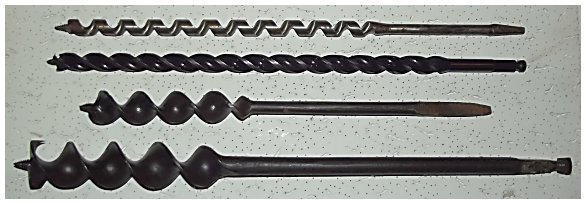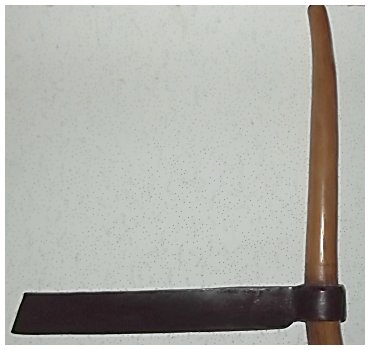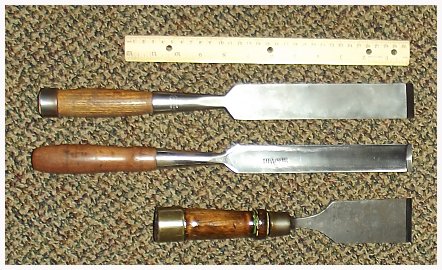|
SITE
INDEX
QUICKENING
NEWS
PREPARATIONS
1.
Food
2.
Manna
Meals
3.
Water
4.
Sanitation
5.
Medical,
health
6.
Kerosene heaters and cookers
7.
Lighting
8. Wood
cooking and heating
9. Communi-cations
10. Essential
Tools
11. Home
built items
12.
Electrical; generators
and power
13. War
preparedness
14.
Gardening
SITE
INDEX
Miles Stair's SURVIVAL
SHOP
HOME
RADIATION
INDEX & JET STREAM
PROPHECY
COMMENTARY
BY MILES
BOOKLETS
BY MILES
GUEST
SUBMISSIONS
PHOTO
INDEX
LINKS
SITE
INDEX
Miles Stair's
SURVIVAL
SHOP
|
|
Cabin Building
Without Nails
Some of the tools
required.
Tools for building a safe,
secure, livable cabin in the woods are still available, it
just takes a little effort to find them. Given the
extreme instability of our so-called "civilization" it may be
necessary in the future to have such an alternative living
space.
More tools and information
on the Shelter page - click here.
And still more tools on the
Tools - Restoration
and Rebuilding page.
And
Tools For Cabin Building
Sharpening crosscut saws.
Crosscut Saw
Manual.
And
How to make sheathes to keep tools sharp.
First, building materials
must be obtained. In my part of the country that means
logs - felling trees.
|

|
A selection of cross cut saws,
from 3 feet long on the left to a 4 foot saw on
the right. The 3 foot saw is good for cutting
notches in logs and cutting firewood sections
from up to 12" diameter logs, while the longer
saws are better for felling and also bucking
larger diameter logs. |
|
 |
Single bit axe on the left is
good for chopping off limbs, and safer for the
inexperienced to use than the double bit falling
axe on the right. |
And then the logs must
be smoothed and shaped, and if there is time debarked.
Debarking of old growth logs required a ''slick,'' a huge
chisel about 2 feet long with a 4'' wide blade. Second
growth logs usually encountered these days can be debarked
with smaller - but still sturdy - 1 1/2'' or so chisels.
Or large draw knives. The draw knives shown are my
smaller 6 and 8 inch folding handle draw knives. I use
10'' solid handle draw knives for bark removal and rough
shaping.
Shaping logs so they fit
snugly together is done with hand saws, bow saws, broadaxes,
framing hatchets and adze. Broadaxes are scarce and
expensive so other tools are generally used now. The broadaxe
shown below is at least 150 years old.
Adze tools come in a
variety of shape and sizes for cutting and shaping wood for a
specific purpose.
|
The
hand adze shown above has a short 12" handle with a
blade 3 3/4" wide and weighs over 3 pounds. This
tool is excellent for rough cutting the face of a log
to a smooth surface for door sills, window frames and
flooring. The short handle allows working in
tighter places and the weight of the head does the
work. This adze was made for the Italian
military in WW I and is hand forged. I purchased
this adze from Sportsmansguide.com in July, 2015 for
less than $15.00 |
`
|
 |
This
lighter adze with an 18'' handle is used to smooth logs
and boards so they fit together better, smoothing logs for
use as window and door casings, plus a whole host of other
cabin building work.
A lighter
adze is easier to swing but does lack the energy needed to
hog off wood quickly. This adze is used to smooth a
finish after the heavier adze above has removed most of
the wood. |
`
|
 |
 |
|
A bowl adze
is used to cut a hollow in wood to make bowls, plates,
rain gutters, etc. This is a small adze with a 1.6''
curve, a 14 5/8" handle, and the head weighs 14 ounces.
This adze is new, hand forged from high carbon steel by
Ivan Stoev in Bulgaria. Mr. Stoev is a master 'smith
and has many shapes and sizes of axes and adzes listed
(Aug, 2015) on eBay under the store name
thracian-pickers. |
`
|
 |
The tool
shown at left is perhaps the perfect "Wildcrafters"
hatchet for building smaller, expedient shelters.
The bearded axe head has a 4 1/2'' edge, the cooper's
adze on the other side has a 1.6'' concave edge can cut
bowls, gutters, notch small logs, etc. The handle is 18
3/4'' long and the total weight is 1 lb 12 oz. This Wildcrafters
hatchet is hand forged by Ivan Stoev in Bulgaria.
It cost less than $60, including very fast delivery, in
July 2015. The eBay store name is
thracian-pickers. |
`
|
The adze
lineup above needs perspective to see the relative sizes
of the various tools. On the left is a traditional
large adze with a 33'' handle and 4 1/2'' face.
The primary use was making logs into planks. These
are dangerous tools and must be used with care!
Hit a knot and the blade can slide off and cut right
into an ankle. Been there, done that. When I was
building a cabin 45 years ago I gave myself a nasty cut
on my left ankle.
The
shorter adze 2nd from left was commonly used in ship
building, the point on the head being used for packing
caulking between boards. This is an excellent tool
for beginners to use for rough shaping of logs on the
interior of cabins.
The
heavy, short handled adze 3rd from left is used for
hogging out wood for making door and window sills,
flattening the ends of floor joists, etc. |
 |
I skipped right over the
foundation. Shovels and picks are utilized for that hard
work.
|
 |
 |
|
 |
|
Above, a
heavy hand-forged pick made for the Italian army, most
probably for WW I. It was a little rough from years
of use so I sanded it down with a hand-held belt sander.
In the photos above the handle has been refinished but the
head is not yet finished. This pick was properly
forged with soft iron for the main body and socket.
The pick point is hardened steel and the back and edge of
the blade is hardened steel - a beautiful, time honored
way to forge tools. This large, well-made pick was
purchased in July, 2015 from Sportsmansguide.com for less
than $15.00. |
Fastening logs together or
timber framing is down with dowels put into drilled holes.
|
 |

The auger bit above, bottom,
is 26" long. |
|
Five types
of auger handles. #1 is a single purpose handle,
hand made in the late 1800's, for the lowest auger on the
right, above. #4 is a James Swann handle, perhaps
the strongest one of all. #5 is a ratchet auger
handle that is very strong - it weighs almost 4 pounds! -
and the left handle can be removed and screwed into the
top for boring holes in corners or tight places. Note that
the top of the handle has a swivel joint and will not tear
out the palm of a hand in use. |
The small
augers at top are 11/16" and 5/8" in diameter. These
are used for boring holes in logs to secure them together
with rebar. The larger augers are for the use of
thick, strong dowels to secure logs together or to the
bottom foundation logs. The small augers are 18"
long - long enough for securing two logs together with
iron rod or rebar so they will not slip. These are
used for logs cut out for window and door frames, for
example. |
`
|
 |
The
standard brace and auger bits can be used for drilling
shallow holes. These are used for window and door
casings, planking, and making furniture using dowels made
with the tools shown below. Note that the auger bit
on the left is a single-flute design for cutting soft wood
that produces large chips when drilling. The auger
bit on the right is a double-flute design for cutting
hardwoods; the double-flute is stronger yet can handle the
smaller chips generated when drilling hardwood. |
And then the dowels are
made....
|
 |
Smaller draw knives
are used to shape logs, remove bark when thin, and when
needed to taper the end of poles and wood to be made into
dowels. Folding handle draw knives are especially
handy as when the handles are folded in they protect the
cutting edge of the blade. And they can be safely
and easily carried (see
here). |
`
|
 |
Spokeshaves
are used to roughly shape a piece of hardwood so it can be
finished into a dowel. The spokeshaves shown at left
have dual cutters, one cutter being concave to produce
smoother round cuts. |
|
 |
#1 is a dowel
pointer. It tapers the end of a piece of wood so it
can enter the dowel maker. #2 is a dowel maker,
adjustable from 1/4" to 1", and can cut dowels up to 4"
long. #3 is for cutting a flat face on wood at the
end of a 7/8" or 1" dowel for making legs for benches,
tables, etc. These old tools can often be found in
good condition on eBay. |
Then the dowels are driven
into the holes.
 |
"Single jacks" are heavy
one-handed hammers.
Right to left: 2 1/2 lb, 3 lb, and an 8 pounder. The 8
pound is tough to use one handed (it can be done), but the handle
is long enough for two handed use when needed. The most
useful single jack for driving dowels is the 2 1/2 pounder on the
right. |
Finally, a froe for making
shakes for the roof...
|
A froe is
for making cedar shakes from "bolts" of cedar or other
wood that splits straight. The shakes can then
be used for roofing. This froe blade is 18" long and
was made in the early 1930's from a truck leaf spring by a
blacksmith in Langlois, OR, in the early 1930's. The
shakes were drilled and wired in place. |
 |
The bench below
was made in a half hour. It is crude but it works.
With more time the legs could have been made from dowels and
the seat made nice and smooth, even slightly concave to feel
better when sitting down.
`
RELATED PAGES >
SHELTER
Cabin Building
Without Nails
CARPENTRY TOOLS FOR REPAIR AND CONSTRUCTION
Tools - Restoration
and Rebuilding
How to make sheathes to keep tools sharp.
|
|
|



























